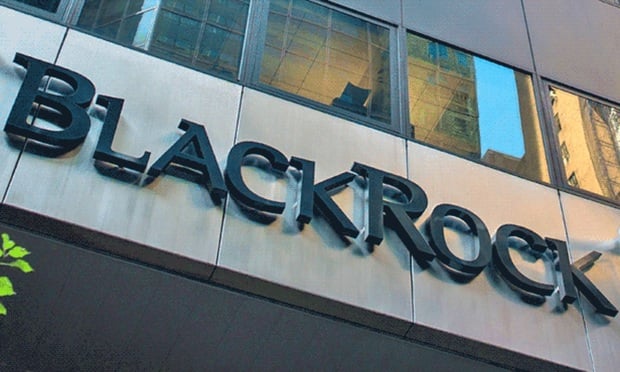Many Americans need help when faced with a major expense or financial hardship, whether it’s paying for college, health care, food, or living expenses, or resolving debt, and in order to overcome these challenges they may seek financial aid through a federal program or process.
Depending on the program and the financial help needed, having money in a retirement savings account could affect how much financial assistance an individual receives.
Before applying for government assistance, consider how each of the below programs stand to impact your savings.
Student financial aid
For many individuals, financial help is necessary when paying for higher education, especially as the price tag continues to grow.
When filing for federal student aid with the U.S. Department of Education Office of Federal Student Aid, the largest provider of student financial aid in the nation, an applicant is required to report many types of assets (the parents’ and the student’s).
Those applying may wonder whether retirement savings accounts are included in these reportable assets. The answer depends on the formula used to determine how much financial aid the student is eligible to receive.
Balances in employer-sponsored retirement plans and IRAs generally are not included in the calculation. However, nonretirement account balances, such as checking, savings, CDs, brokerage accounts, stocks, bonds, mutual funds, etc., are included.
In essence, the balance in a retirement plan or IRA—whether owned by the parent or the student—is not counted. But any contributions to a retirement plan or IRA in the previous year—the tax year for which asset information is gathered—are counted.
According to the Federal Student Aid worksheets, “Completing the FAFSA 2017-18” and “The EFC Formula, 2017-2018,” prior year contributions to pension, profit-sharing, 401(k), 403(b), SEP, and SIMPLE IRA plans and Traditional and Roth IRAs are viewed as untaxed income, and must be added back to the parent’s or student’s adjusted gross income portion of the calculation.
Any distributions from these plans or IRAs also are counted as income and are reportable assets for the following year’s financial aid application, according to www.savingforcollege.com.
This is something to keep in mind when contemplating an IRA distribution or preparing to withdraw from a retirement plan during college years.
Even distributions taken to pay for higher education expenses are counted as part of the student’s income for the following year’s financial aid eligibility.
Welfare and medical aid
How does an IRA or retirement plan affect one’s ability to qualify for other types of financial aid? Again, it depends.
For federal programs meant to help low-income Americans, such as Medicaid or Children’s Health Insurance Program (CHIP), Temporary Assistance to Needy Families (TANF), Supplemental Nutrition Assistance Program (SNAP), and Supplemental Security Income (SSI), each state is allowed to establish—or eliminate—asset limits, the maximum dollar amount of assets the applicant may own to qualify for the program.
Although there is no federal asset limit, a common state-established dollar limit is $2,000.
Depending on the federal program and the state where the individual is applying for program benefits, certain resources, such as retirement accounts, may be included in the program’s asset and income limits. If included, saving for retirement could jeopardize the individual’s eligibility for the program.
But there are variations and exceptions to this guideline individuals will have to pay close attention to.
Most states generally do not count employer-sponsored retirement plans, such as a 401(k) plan, in the asset limit because a triggering event is needed to withdraw money; the account is not easily accessible to the needy individual.
IRAs, on the other hand, which do not require a triggering event, are more likely to be counted in the asset limit. A typical rule is that an IRA counts if it is not in required minimum distribution (RMD) status.
For example, a Traditional IRA owner who is not yet required to take RMDs may have to include his IRA balance as part of his assets when applying for a low-income government program, while someone who is taking RMDs may not, but any RMDs taken would be counted.
Another common rule is to count the IRA if the IRA owner is age 59½ or older and the early distribution penalty tax no longer applies.
Bankruptcy
When financial circumstances force individuals into bankruptcy, the possibility of surrendering their retirement savings is a valid concern.
The good news is that retirement plan assets generally are exempt from bankruptcy. This means the retirement plan assets of an individual filing for bankruptcy are protected from creditors. The exemption applies to the assets in an IRA, 401(k) plan, 403(b) plan, profit sharing plan, and other similar retirement savings vehicles.
Congress recognized the need to protect retirement assets and put in place federal exemptions that apply a minimum standard for “retirement funds” to be exempt.
Each state may provide greater protections beyond the federal rules. Assets in plans covered under the Employee Retirement Income Security Act of 1974 generally are excluded from one’s bankruptcy estate with no limit on the amount of assets protected by the exclusion. T
he exemption of IRA assets, however, is limited, with an inflation-adjusted cap currently set at $1,283,025. Each state can provide additional protection to IRA exemptions.
When faced with the daunting task of declaring bankruptcy, an individual can rest assured that their own retirement assets generally will be safe from creditor access.
Bottom line: Consult program rules and state guidance
Saving for retirement often takes a backseat to one’s current financial circumstances, and money set aside for retirement tends to be used for other more immediate needs.
However, those who qualify for certain federal programs and procedures may not have to sacrifice their hard-earned retirement savings, depending on program and state requirements.
Steve Christenson is executive vice president of Ascensus.
© Touchpoint Markets, All Rights Reserved. Request academic re-use from www.copyright.com. All other uses, submit a request to [email protected]. For more inforrmation visit Asset & Logo Licensing.






